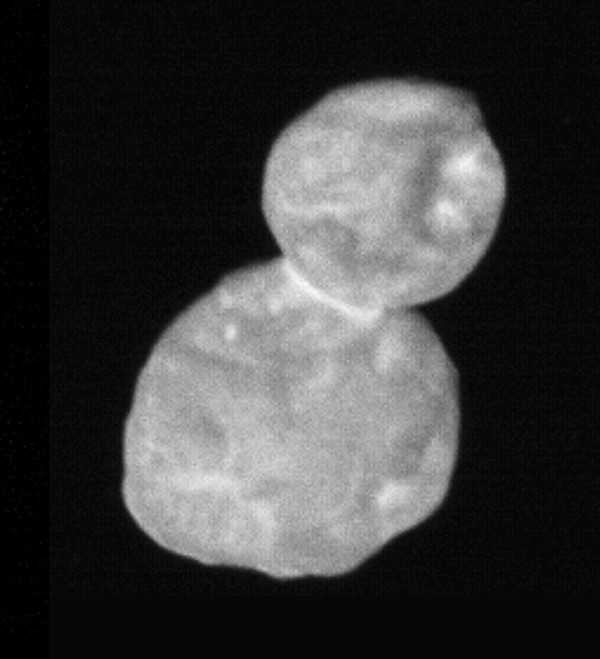
The New Horizons spacecraft which was launched in January 2006, has captured the clearest view of the most distant object ever explored, the Kuiper Belt object (KBO) 2014 MU69, which is known as Ultima Thule.
On New Year's Day, NASA's New Horizons spacecraft flew past the distant object, while setting the record for the flyby of the most distant planetary object in history.
Later, NASA stated in a statement that the newly released image was taken "during the historic flyby is the clearest view yet of this remarkable, ancient object in the far reaches of the solar system - and the first small 'KBO' ever explored by a spacecraft."
AS per the American space agency the oblique lighting of the image showcases new topographic details that include, numerous small pits up to about 0.7 km in diameter, as well as the day or night boundary, or terminator, near the top.
The Ultima Thule image, obtained with the wide-angle Multicolour Visible Imaging Camera (MVIC) component of New Horizons' Ralph instrument, also reveals that the large circular feature almost seven km across and on the smaller of the two lobs as a deep depression.
But NASA said that the researchers are not clear whether these pits are impact craters or the shows the result of other processes, such as "collapse pits" or the ancient venting of volatile materials.
However, scientists believe that both lobs also showcase much intriguing light and dark patterns of unknown origin that could help to reveal the details about how this body was assembled during the creation of the solar system, 4.5 billion years ago.
Principal Investigator Alan Stern, of the Southwest Research Institute in Boulder in Colorado, said, "This new image is starting to reveal differences in the geologic character of the two lobes of Ultima Thule, and is presenting us with new mysteries as well."
"Over the next month there will be better colour and better resolution images that we hope will help unravel the many mysteries of Ultima Thule," he further added.
This image was taken when the KBO was around 6700 km from the spacecraft at around 12.26 am seven minutes before the closest approach on January 1. Later the original picture, with a resolution of 135 meters per pixel, which was stored in the spacecraft's data memory, transmitted to earth between January 18 and 19.









